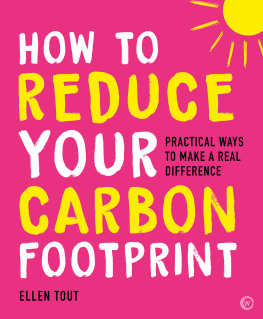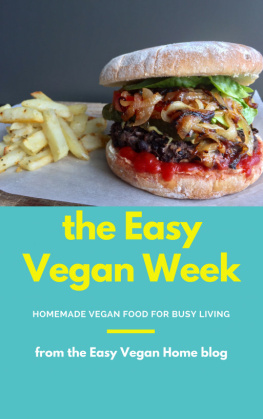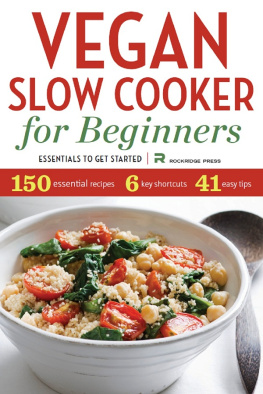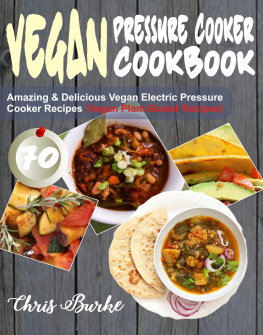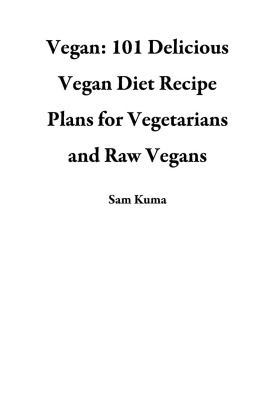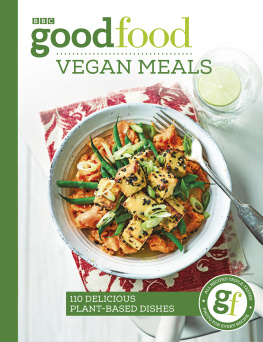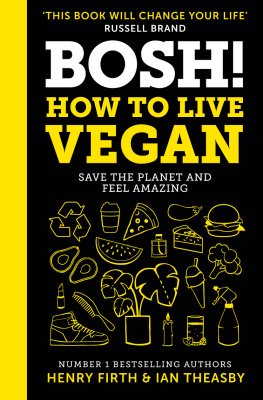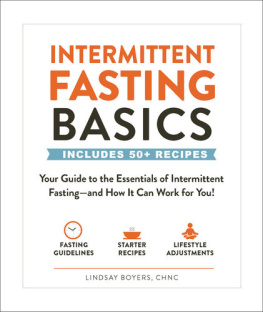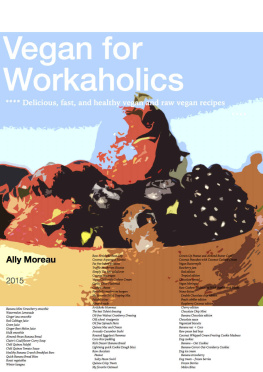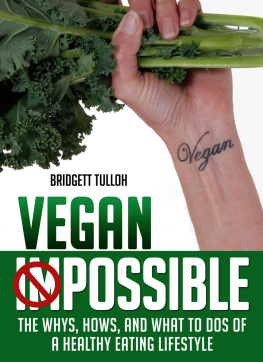

The Complete Book of Vegan Compleating
Ellen Tout
First published in the UK and USA in 2021 by Nourish, an imprint of Watkins Media Limited
Unit 11, Shepperton House
8393 Shepperton Road
London N1 3DF
Copyright Watkins Media Limited 2021
Text and recipes copyright Ellen Tout 2021
Artwork copyright Liz Child 2021
The right of Ellen Tout to be identified as the Author of this text has been asserted in accordance with the Copyright, Designs and Patents Act of 1988.
All rights reserved. No part of this book may be reproduced in any form or by any electronic or mechanical means, including information storage and retrieval systems, without permission in writing from the publisher, except by a reviewer who may quote brief passages in a review.
Commissioning Editor: Ella Chappell
Managing Editor: Daniel Culver
Interior Design: Luise Roberts
Illustrations: Liz Child
Production: Uzma Taj
Typeset in Archer
Printed in China
A CIP record for this book is available from the British Library
ISBN: 978-1-84899-394-5 (Paperback)
10 9 8 7 6 5 4 3 2 1
Publishers note
While every care has been taken in compiling the recipes for this book, Watkins Media Limited, or any other persons who have been involved in working on this publication, cannot accept responsibility for any errors or omissions, inadvertent or not, that may be found in the recipes or text, nor for any problems that may arise as a result of preparing one of these recipes. Ill or elderly people, babies, young children, people who are pregnant or breastfeeding/chestfeeding, or anyone with any special dietary requirements or medical conditions, are advised to consult a medical professional before following any of the recipes contained in this book.
Notes on the recipes
Unless otherwise stated:
Use free-range eggs and poultry
Use medium eggs, fruit and vegetables
Use fresh ingredients, including herbs and chillies
Do not mix metric and imperial measurements:
1 tsp = 5ml 1 tbsp = 15ml 1 cup = 250ml
For all the fellow waste warriors and creative plant-based cooks.
Thank you to Nadia for all the support, cups of tea, slices of banana bread, and for helping taste-test every recipe in this book.
Contents
Key to Compleating
The icons throughout this book show which parts of different produce can be used, such as peels, cores or seeds. Ive also included ways to upcycle, repurpose, reuse or grow from the parts you might usually throw away.

Use this key to quickly reference the part or tip youre looking for.
Introduction
You cannot get through a single day without having an impact on the world around you. What you do makes a difference, and you have to decide what kind of difference you want to make. Dr Jane Goodall
Why compleat?
It all started with a pumpkin one Halloween. As it sat on our kitchen worktop, ready for carving, I couldnt help but question if it was destined for more. With its beautiful orange skin, sweet autumnal flesh and abundance of seeds maybe this year we should cook it instead? And so began an afternoon of cooking, and a new yearly tradition. From one pumpkin, we created soup, curry and pie, as well as treats for my dog. I looked at the mass of seeds and peelings and wondered if we could eat those too. Within minutes we were munching on delicious smoky roasted pumpkin crisps and seeds.
To compleat means to eat all edible parts of fruits, vegetables and herbs. The more I experimented, the more I discovered. It turns out that compleating is rather moreish! It was as if I was relearning how to cook. What can you do with leftover vegetable peelings? Do you have to trim the top off a leek? Why dont we use the whole chilli or ginger root? And why do we hardly ever see, let alone eat, the beautiful leafy tops from root vegetables? Often the rules about cooking and food preparation are habits learned from our parents or from recipe books, so we dont think to question why we discard some parts and eat others.
Growing up, my parents always used the old adage of waste not, want not. We dont have to look back too far to find that some of the recipe ideas in this book are not new we have just forgotten them. Many of our grandparents would have cooked with every single part of their ingredients. Offcuts from produce might have been simmered into stock, leftover lemon skins were often used for cleaning, and many more people grew, harvested and preserved their own produce. My nan always had jars of homemade pickles stored in her kitchen cupboards. If we look back to wartime Britain, people made the most of ingredients, cooking with things like the stalks from cauliflowers, the tops from beetroots, turnips and carrots, and the pods from peas and beans. Carrot cake and, one of my favourites, carrot top soup, are both recipes from that era.
I believe that today, many of us have lost that connection with nature and where our food comes from the magic of sowing a seed, seeing the plant flourish and making the most of its whole harvest. Were so used to finding produce pre-prepared, packaged and trimmed, but it can be so much fun to rediscover ingredients and rethink how we cook with them.
There are so many reasons to compleat. Compleating is environmental, ethical, nourishing, creative, delicious, rewarding, and saves you money it just makes good sense! Sadly, in the UK, 70 per cent of the food waste from our homes could have been eaten! When food reaches landfill, it cant compost naturally and can take many years to degrade, releasing methane in the process. This is responsible for eight per cent of global greenhouse gases. On top of that, theres also the land, energy, water, transport and resources involved in producing the food to begin with. Of course, composting uneaten food is a better option than sending it to landfill, but isnt cooking with it an even better, and way more exciting, one? Compleating is cooking good food, from all possible parts of the ingredient.
Often the peels, seeds and offcuts we commonly discard are actually brimming with flavour and nutrients. Seeds, like those from a melon, squash or pumpkin, are filled with the energy and goodness that the plant needs to sprout, grow and fruit. The skin, on the other hand, is crammed with everything the plant uses to protect itself, plus extra fibre and nutrition. The leafy tops from root vegetables are also packed with vitamins and minerals, just like other greens that we do eat. Cooking with these parts introduces more colour and variety into your diet, as well as extra vitamins, minerals and natural goodness. When eating the whole ingredient, I do recommend that you scrub your produce well and choose organic if you can.
When my fascination with compleating first began, I searched everywhere for a book about reducing food waste for vegans. I found hundreds of books that included tips for cooking with leftover or offcut meat or dairy but not a single one dedicated to fruits, vegetables and herbs. That planted the seed of an idea that continued to grow: The Complete Book of Vegan Compleating. This is a book for anyone who wants to make the most of plant-based ingredients, whether youre vegan or not. Be it a glut of courgettes/zucchini grown at your allotment, a pile of skins from cooking onions or the peels from your daily banana, I truly hope that this book helps inspire you to cook with more variety and imagination and less waste.
Next page

